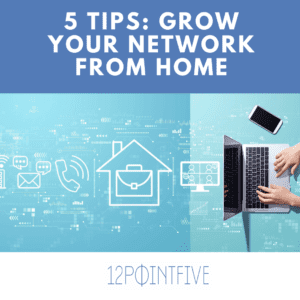As a business development consultant to business owners, my role is helping clients plan to approach larger clients then build relationships with them. Now conferences have gone virtual and business development looks a little different. There’s no bumping into someone in the line for ladies’ room or complementing someone’s amazing shoes to make a connection. How do you find new clients, much less make a connection?
 1. Love your current clients.
1. Love your current clients.
If you can provide a solution to your clients, reach out; if you offer a solution that is specific to the crisis, they NEED to hear from you.
The solution doesn’t have to be medical. Can you help clients manage newly remote teams? Can you do an audit of expenses that will save them money? Think about how a service you offer can provide help to people, not just another service.
2. Develop a list of corporate targets.
It sounds simple but it helps to choose just 5 targets that you want to do business with. This is especially helpful if you are looking for larger clients or have a new offering or service. Narrow down a list of potential clients – specific companies – that would be great for your business. Perhaps you have pivoted to offer new solutions or reframed an existing offering to current clients. What solutions can you offer to those companies? Pay special attention to the industries where you have past performance. Do you specialize in the financial industry? Are most of your current clients pharmaceutical companies? Find other companies in that same space.
3. Do your market research. Follow the companies on social media.
If you were to say that social media isn’t your thing, I’m certainly one to agree that social media is a blessing and a curse for a small business owner. It can seem to absorb time for “real work” and often feels like a liability rather than an asset. Right now though, social media can be a great addition to your market research efforts. Follow the potential clients you list above on social media – twitter, LinkedIn, Instagram – whatever accounts you usually manage. I also set a google alert for different companies so I get emails on news and updates. This can give you 1) insights into what their needs might be and 2) a reason to reach out.
4. Review your marketing materials including:
- Website, business cards and printed materials
- Capability Statements
- Does your marketing reflect what you’ve learned about your targets?
- Does your capability statement or one-pager reflect different past performance for different types of customers?
- Do you have any certifications or credentials that should be updated?
Even if you don’t plan to make any big changes right now, audit those materials so you can a plan in place for when business is flowing again.
5. Show up!
This advice is the same. All those cancelled conferences are showing up in virtual form. I have spoken at several conferences that have moved online. Instead of chance meetings in the restroom line, you can reach out via the chat function to say you liked what that person has to say. You can introduce yourself and connect via LinkedIn or email right away. While there are some downsides to virtual conferences, there are also some benefits in terms of following up immediately and knowing that your potential client is not travelling.
For more information on what’s happening virtually and how to make the most of your business development in difficult times, sign up for the 12PointFive newsletter at www.12pointfive.com.
 Liz Whitehead helps women business owners get bigger clients and more of them. She is the CEO of 12PointFive, a business development consultancy and Co-Mastermind at Diversity Masterminds, an online course for diverse businesses to leverage their certifications. Her specialty is diverse business owners who want to grow and scale. Find her at www.12pointfive.com.
Liz Whitehead helps women business owners get bigger clients and more of them. She is the CEO of 12PointFive, a business development consultancy and Co-Mastermind at Diversity Masterminds, an online course for diverse businesses to leverage their certifications. Her specialty is diverse business owners who want to grow and scale. Find her at www.12pointfive.com.
